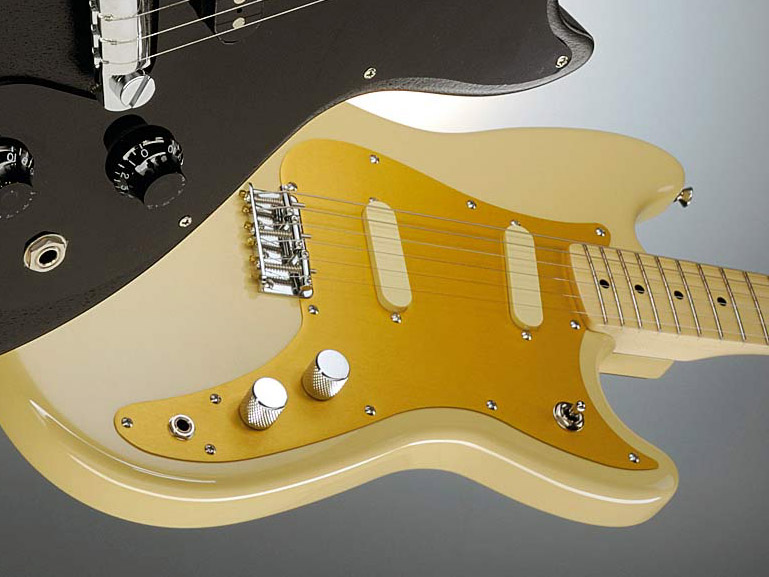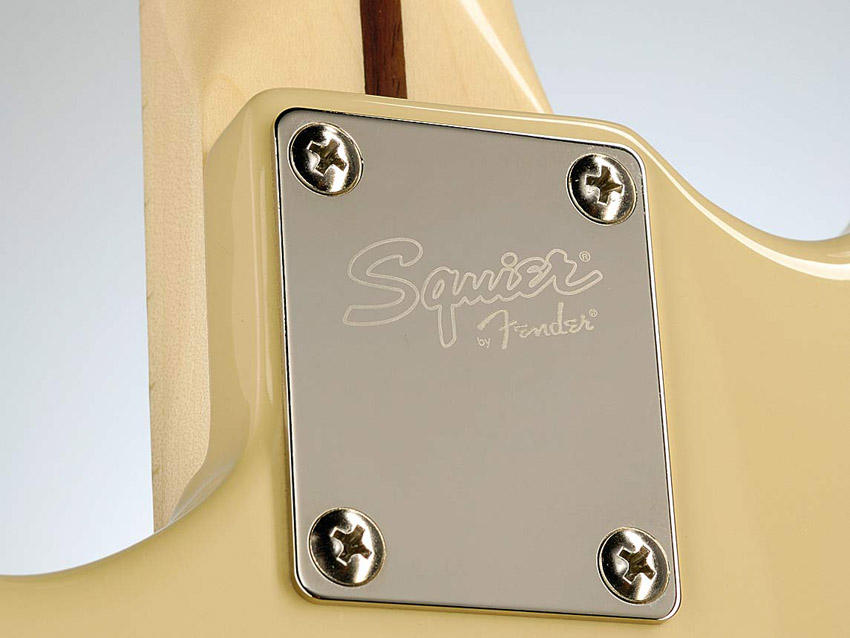MusicRadar Verdict
Hard to fault at the price, a good sounding and playing slice of Fender's past. Whether it's valid today at the price of a Strat or Tele remains to be seen.
Pros
- +
Clean build. Vintage vibe. Good sounds.
Cons
- -
We're not quite sure who it's aimed at.
MusicRadar's got your back

Squier Classic Vibe Duo-Sonic '50s

Squier Classic Vibe Duo-Sonic '50s

Squier Classic Vibe Duo-Sonic '50s
Back in the mid-1950s the burgeoning electric guitar market needed to attract new blood, so many stores began to offer music lessons to youngsters. It was a great way to create sales so long as the price was right, which meant a guitar that was simple and quick to produce.
In 1956 Fender introduced the single-pickup Musicmaster and the dual-pickup Duo-Sonic priced (by February 1957) at $119.50 and $149.50, both considerably cheaper than the Stratocaster which topped the line at $274.50.
Termed 'three-quarter size' the body was full size but the scale length was reduced by three-inches to 22.5-inches.
Fifty years on and the Duo-Sonic is back in our stores, reappearing as part of Fender's entry-level Squier line within the new Classic Vibe range. Let's take a look…
Vintage vibe
The Classic Vibe series, which also includes two Strats and a Tele, isn't meant to be historically accurate - the guitars are as much based on the original early 80s Squiers as vintage Fenders.
But of the range, this Duo-Sonic really does a very good job of nailing the original design. The fundamental difference is that, sensibly, the scale length is increased to 24-inches (the same as the Jaguar), and we have a different name on the headstock, but it has vintage vibe in spades.
The Duo-Sonic features a really good desert sand finish over a thinner 38mm thick basswood body (with rear belly contour), that is more opaque than the original blonde. It may be manufactured in China but its finish takes you straight back to 1950s America.
Want all the hottest music and gear news, reviews, deals, features and more, direct to your inbox? Sign up here.
Robust feeling
Likewise the brushed aluminium scratchplate - a deeper gold than the originals and hopefully the anodising is more robust - that holds the two cream covered single-coils, Tele-knobbed volume and tone, the output socket and a robust feeling three-way toggle pickup selector on the treble-side horn.
There's no vibrato, but the top-load bridge is efficient with three saddles that, like a Tele's, are adjustable for height and intonation. However, they are not as accurate as a Strat's individual saddles. The tuners are standard split-post vintage types and the 'student' cream plastic buttons suit the guitar.
Stellar neck
But we've left the best until last: the neck. While not vintage accurate it is superb, with a wide 'C' profile that feels 'right' from the off.
Medium gauge frets are cleanly installed and polished (there's a little gap under one end which should have been spotted) and the untinted maple finish, which matches the desert sand, is perfectly done without the sometimes over-thick feel of a lacquered maple fingerboard.
A small point but we have a modern truss rod access behind the nut, which is a lot easier to adjust than the vintage end-of-the-neck style.
Sounds
Coming from a Telecaster to the Duo-Sonic it does feel a little toy-like and really needs a minimum of 0.010s, preferably 0.011s. But the light weight yields plenty of resonance and, although the pickups are quite low in output, there's no doubting the Fender flavour here.
It is a little softer, though, less explosive perhaps. The placement of the bridge pickup means it's not over sharp, the neck is admirably Strat-y and the mix is wide and Tele-like. Sound-wise it's actually a great rhythm guitar - especially with a clean-ish, loud Fender amp.
Add in some gain and that slight softness certainly helps to easily achieve some nastier, but gutsy tones: punky and grungy, although leave some ring to the sound and you perhaps find its sweet spot.
The Duo-Sonic has not proved that popular over the years, probably because of its too-short original scale. But it has a sharp build, a 'proper' finish and good versatility via its dual pickups. Installing heavier strings will soon get it feeling tighter.
It has that Fender character but we do question its target market. Originally it was way cheaper than the Strat, but in this Classic Vibe series they're the same price and, let's be honest here, wouldn't most of us prefer a Strat or Tele?
Dave Burrluck is one of the world’s most experienced guitar journalists, who started writing back in the '80s for International Musician and Recording World, co-founded The Guitar Magazine and has been the Gear Reviews Editor of Guitarist magazine for the past two decades. Along the way, Dave has been the sole author of The PRS Guitar Book and The Player's Guide to Guitar Maintenance as well as contributing to numerous other books on the electric guitar. Dave is an active gigging and recording musician and still finds time to make, repair and mod guitars, not least for Guitarist’s The Mod Squad.
